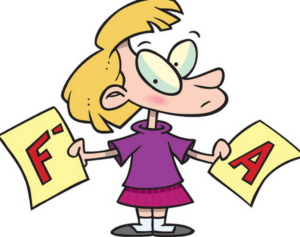ADHD and School Performance
ADHD, a brain disorder, is not considered to be a learning disability but ADHD has been shown to impair academic performance. Children with ADHD, if it impacts their performance at school, can quality for an Individualized Education Program (IEP). Students with ADHD have a harder time focusing, following directions and learning information compared to their peers.
 The main components of ADHD- inattention, hyperactivity and impulsivity- cause students to be distracted easily and day dream during lessons.
The main components of ADHD- inattention, hyperactivity and impulsivity- cause students to be distracted easily and day dream during lessons.
Studies have found that students with ADHD, compared to their peers, score lower on tests, are more likely to drop out of school and are less likely to complete college. Children who have ADHD are at a higher risk for having a learning disability (LD) compared to children with out ADHD. Students with ADHD can succeed academically especially if parents and teachers work together to address their needs.
ADHD and Learning Disabilities (LD)
While ADHD can cause impairments in school and home settings, ADHD is not a learning disability. ADHD and LD are highly co morbid with up to 20-30% of people with ADHD having a learning disability.
Examples of learning disabilities include
1. Dyslexia- reading disability
2. Dyscalculia- difficulties in understanding math
3. Dysgraphia- difficulties in writing
4. Duditory/ visual processing- sensory disabilities (language)
5. Non verbal- difficulty with spatial relations/ organization
ADHD is typically co morbid with dyslexia (reading). The academic impairments that someone with ADHD experiences, is significantly greater when a student has both ADHD and a learning disability together. However, children with LD are more likely to get extra help in school while children with ADHD are less likely too. This can be due to the fact that some students with ADHD do not realize the effect ADHD can have on their ability to learn.
College Students with ADHD and LD
College students who have ADHD are more likely to fail, withdraw from courses or not even complete their degrees. Studies have shown that this pattern starts in high school with teachers rating that the student with ADHD turned in assignments less, had lower GPAs’ and were more likely to be late. College students with both ADHD and LD (co morbid) have lower self concepts where they do not believe they have the ability to complete difficult assignments.
Moreover, college students with ADHD (on its own) spend less time studying and doing their homework. College students with ADHD are less likely to seek assistance for academic help compared to college students with a learning disorder. Those students with an LD are more likely to go over to their professors and seek assistance or work harder on their own.
How to help students with ADHD
- Educate teachers, parents and children on the effects ADHD has on learning abilities
- Focus on creating a trusting relationship between the teacher and student. The teacher needs to create structured and predictable environment and establish an emotional connection with the student
- Children with ADHD need to build friendships and learn how to interact socially. This will help them concentrate in certain school environments instead of being frustrated due to negative peer interactions.
- The parents and teachers need to collaborate to create behavioral plans that are stable across both settings!
- Children with ADHD should not be seated near doors and windows where they can easily be distracted.
Work Cited1. https://www.understood.org/en/learning-attention-issues/child-learning-disabilities/add-adhd/is-adhd-a-learning-disability
2. https://www.everydayhealth.com/hs/adhd-and-your-child/adhd-children-and-learning-disabilities/
3. DuPaul, G. J., Pinho, T. D., Pollack, B. L., Gormley, M. J., & Laracy, S. D. (2015). First-Year College Students With ADHD and/or LD: Differences in Engagement, Positive Core Self-Evaluation, School Preparation, and College Expectations. Journal of learning disabilities, 0022219415617164.
4. Toplak, M. (2015). ADHD: MAKING A DIFFERENCE FOR CHILDREN AND YOUTH IN THE SCHOOLS. Perspectives on Language and Literacy, 41(1), 7.
5. https://www2.ed.gov/rschstat/research/pubs/adhd/adhd-identifying_pg4.html

